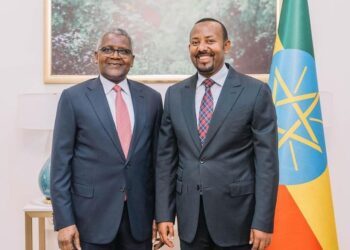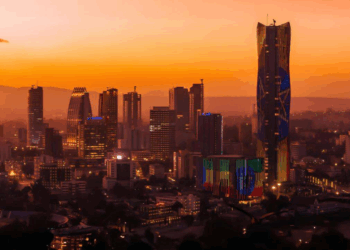Washington is on a diet, and Africa just got told dinner might be delayed.
The U.S. government’s proposed FY2026 budget, which includes a $8 billion cut in funding for the State Department and USAID compared to FY2023, is more than just an American fiscal choice. For Africa, where development aid still plays a starring role in health, education, food security, and even peacekeeping, this is a sharp reminder: the continent is still heavily reliant on a partner who’s getting lean and selective.
And while budget cuts aren’t new, this time feels different. The tone is clear: “strategic prioritization,” “fiscal discipline,” “reducing dependency.” If that sounds familiar, it’s because Africa’s development partners have been politely nudging the continent toward self-sufficiency for decades. Now they’re not just nudging—they’re pulling the rug a little.
What Exactly Is Being Cut?
The foreign assistance budget isn’t vanishing, but it is shrinking in real terms. The White House proposes:
- $58.8 billion for the State Department and USAID—down from $66.2 billion in FY2023.
- Within this, global health assistance—which supports HIV/AIDS programs, maternal health, malaria, and pandemic preparedness—is expected to be trimmed, although specific line-item details are still emerging.
- Funding to multilateral institutions and development finance bodies is under scrutiny.
- Emergency food assistance, critical in places like Sudan, Ethiopia, and the Sahel, is also likely to face tighter caps.
To put this in perspective: USAID funding for sub-Saharan Africa totaled around $7.4 billion in FY2022, and African countries received over 30% of all U.S. global health security funding. That pool is about to get shallower.
Africa’s Growing Pains, Made More Obvious
Here’s the irony: at the same time America is tightening its belt, Africa’s needs are growing. The UN estimates that 282 million Africans were undernourished in 2023, while nearly one in four people lack access to basic healthcare. Youth unemployment across the continent sits above 13%, with informal rates much higher.
That’s not a gap aid can plug forever—and it’s beginning to show.
Even before the U.S. budget cuts, the World Food Programme had to halve food rations for millions in East Africa due to funding shortfalls. In 2022, Ethiopia received over $1.8 billion in U.S. humanitarian and development assistance, but recurring droughts and conflict continue to stretch that support thin.
In this context, depending on foreign budgets to deliver basic services is not just risky—it’s unsustainable.
The Flipside: A Moment of Reckoning—or Opportunity
If aid is decreasing, the logical follow-up is: what fills the gap?
Here’s where Africa finds itself at a fork in the road. One path leads to growing frustration, budget crises, and missed opportunities. The other path? Building financial muscles at home.
We’re already seeing flickers of this shift. Several African nations are experimenting with domestic bond markets to raise capital internally. In 2023, Kenya raised over $1.5 billion through infrastructure bonds, while Nigeria’s sovereign green bond program is attracting international ESG investors looking for impact returns. These are not stopgaps—they’re signs of capital market maturity.
But the progress is uneven. Only 6 African countries have functioning stock exchanges with meaningful daily turnover, and fewer than 25% of firms across the continent have access to formal credit. The challenge is less about ideas—and more about execution and trust.
Fiscal capacity is another sore spot. Tax-to-GDP ratios in sub-Saharan Africa average just 16%, compared to 34% in OECD countries. Closing loopholes, expanding digital tax systems, and targeting the informal sector without suffocating it could free up billions—no grant proposals needed.
And trade? Still sluggish within the continent. Despite the promise of the African Continental Free Trade Area (AfCFTA), intra-African trade accounts for less than 17% of total African exports. Compare that to Europe (69%) or Asia (59%), and the room for growth is glaring.
This Budget Cut Is Not the Problem—It’s the Symptom
Let’s be clear: $8 billion in cuts is not the death of development assistance. But it is a signal—loud and clear—that Africa’s growth model needs rewiring.
Yes, partnerships with the U.S., EU, and China matter. But they can’t replace regional investment, revenue reform, value-added industries, or functional trade corridors. As the global economic center of gravity shifts—and donor fatigue quietly grows—Africa must reposition itself not as a recipient, but as a co-creator of solutions.
Because the next time America sneezes, Africa shouldn’t need a ventilator.























